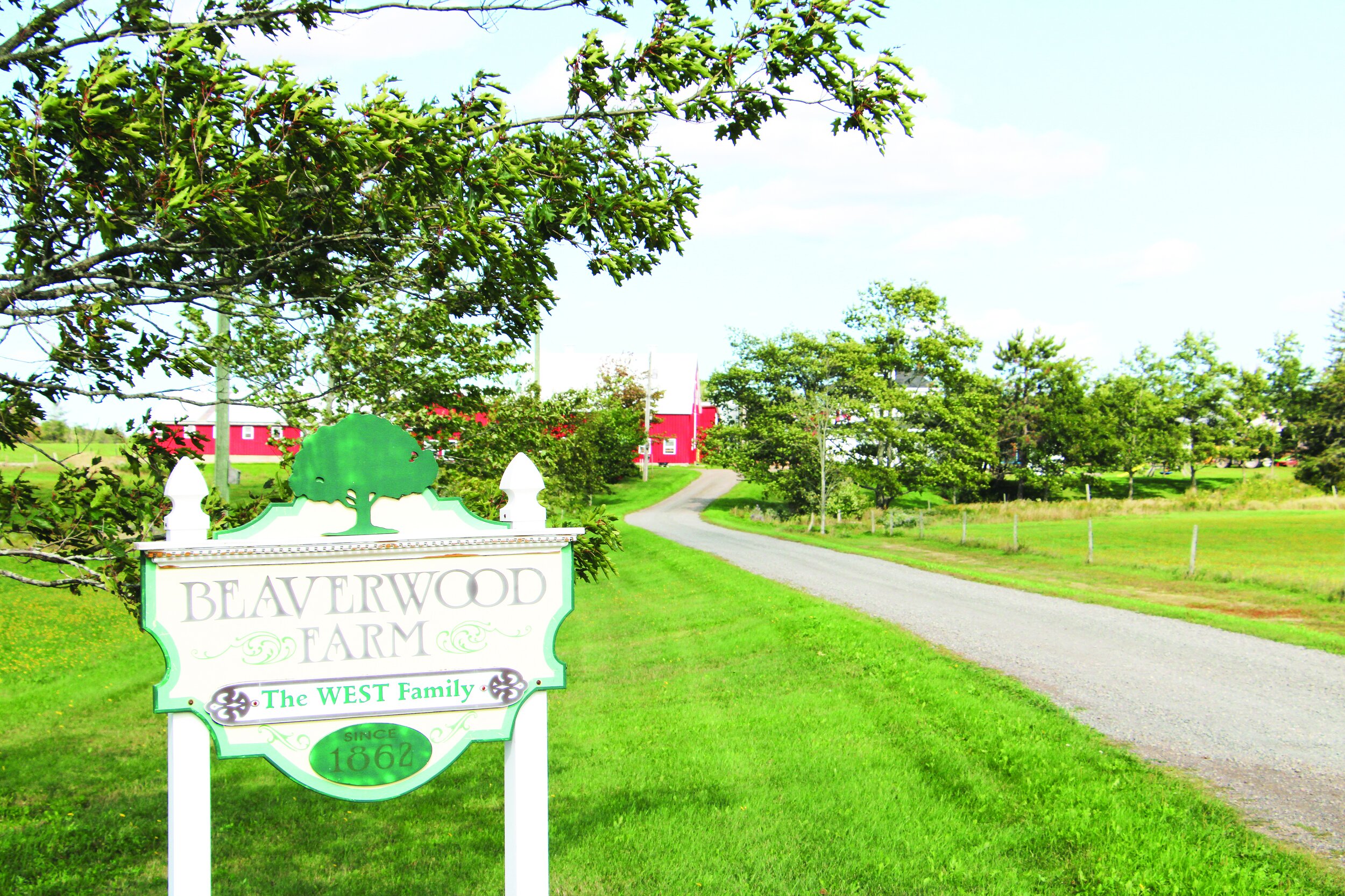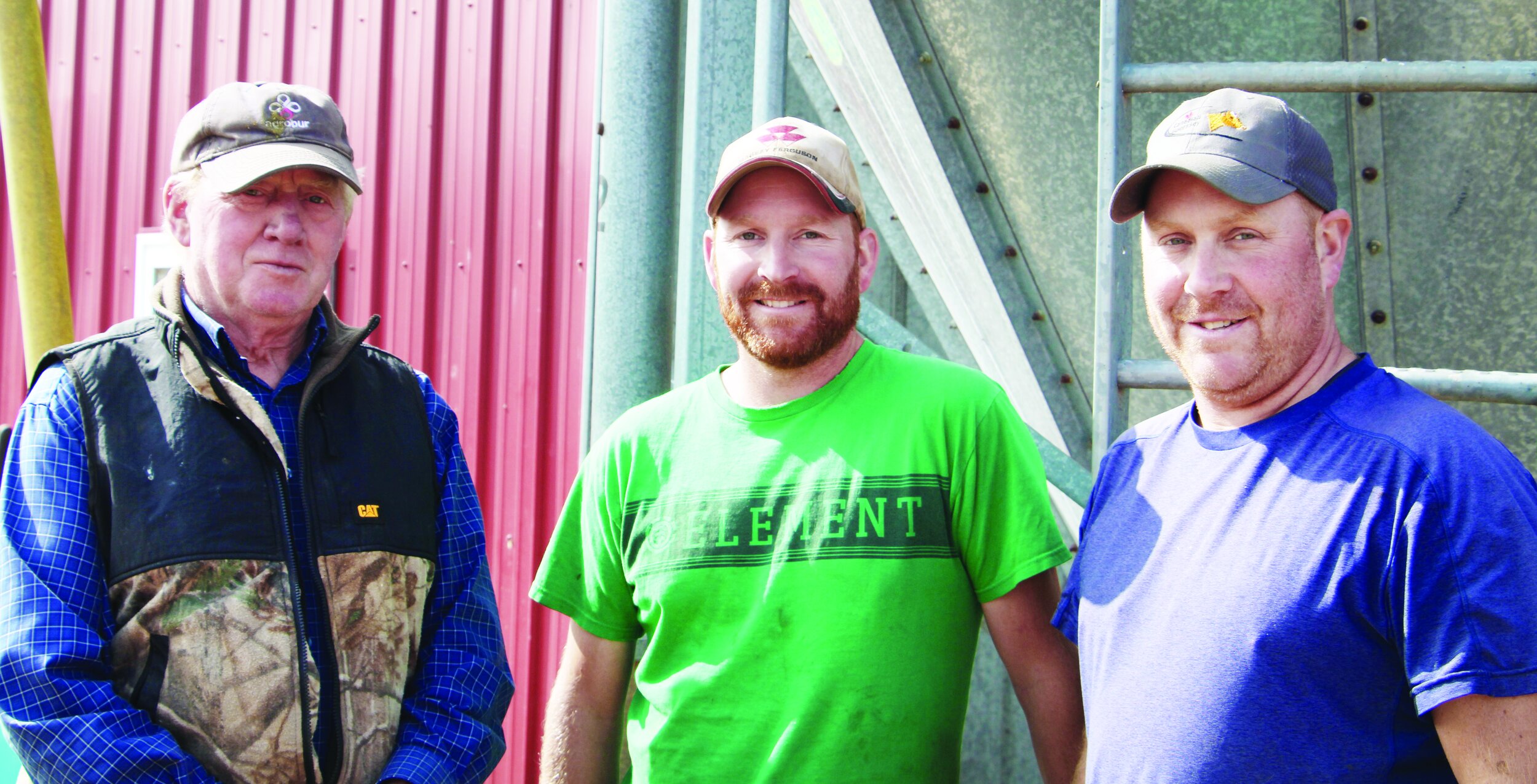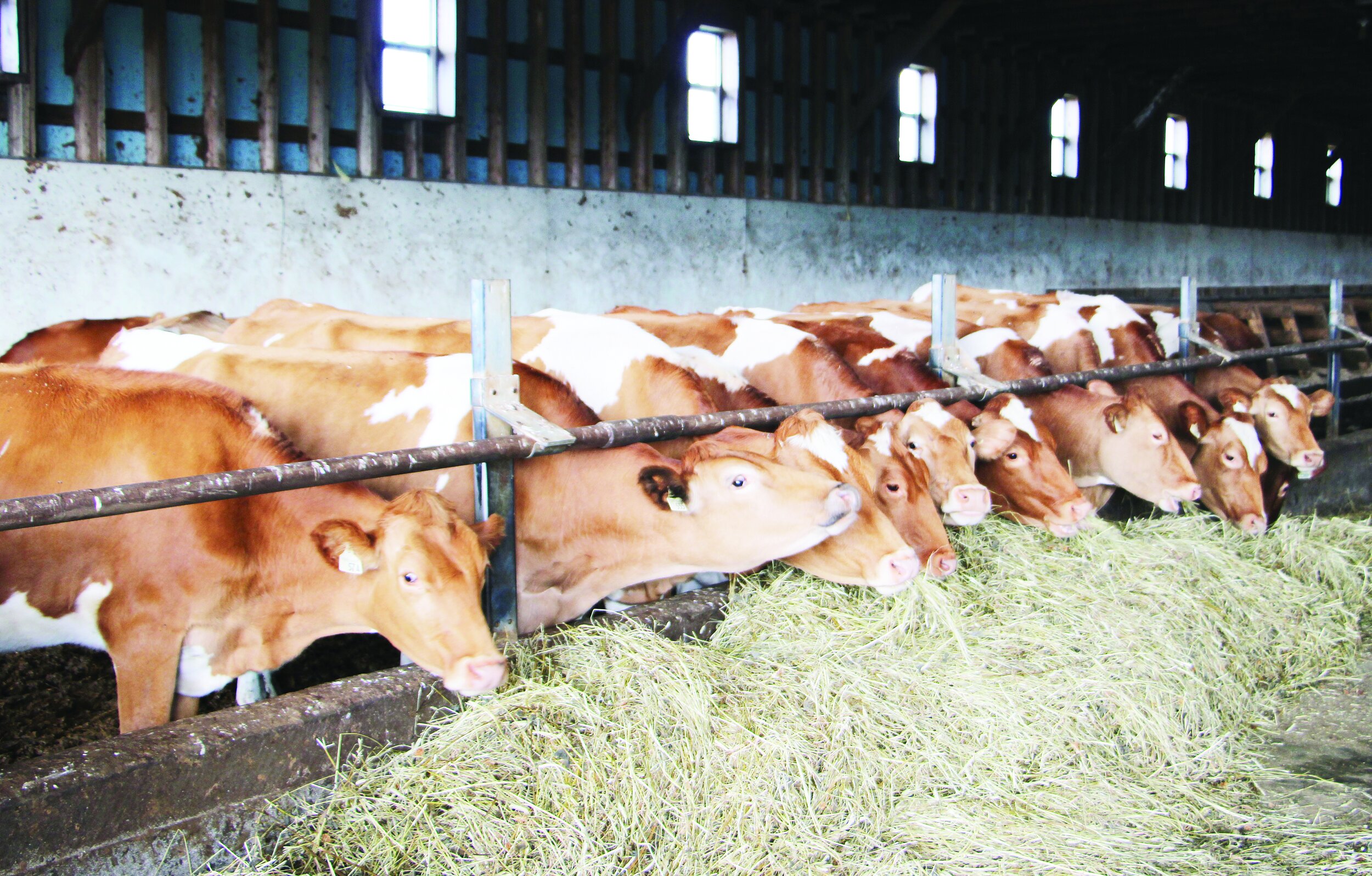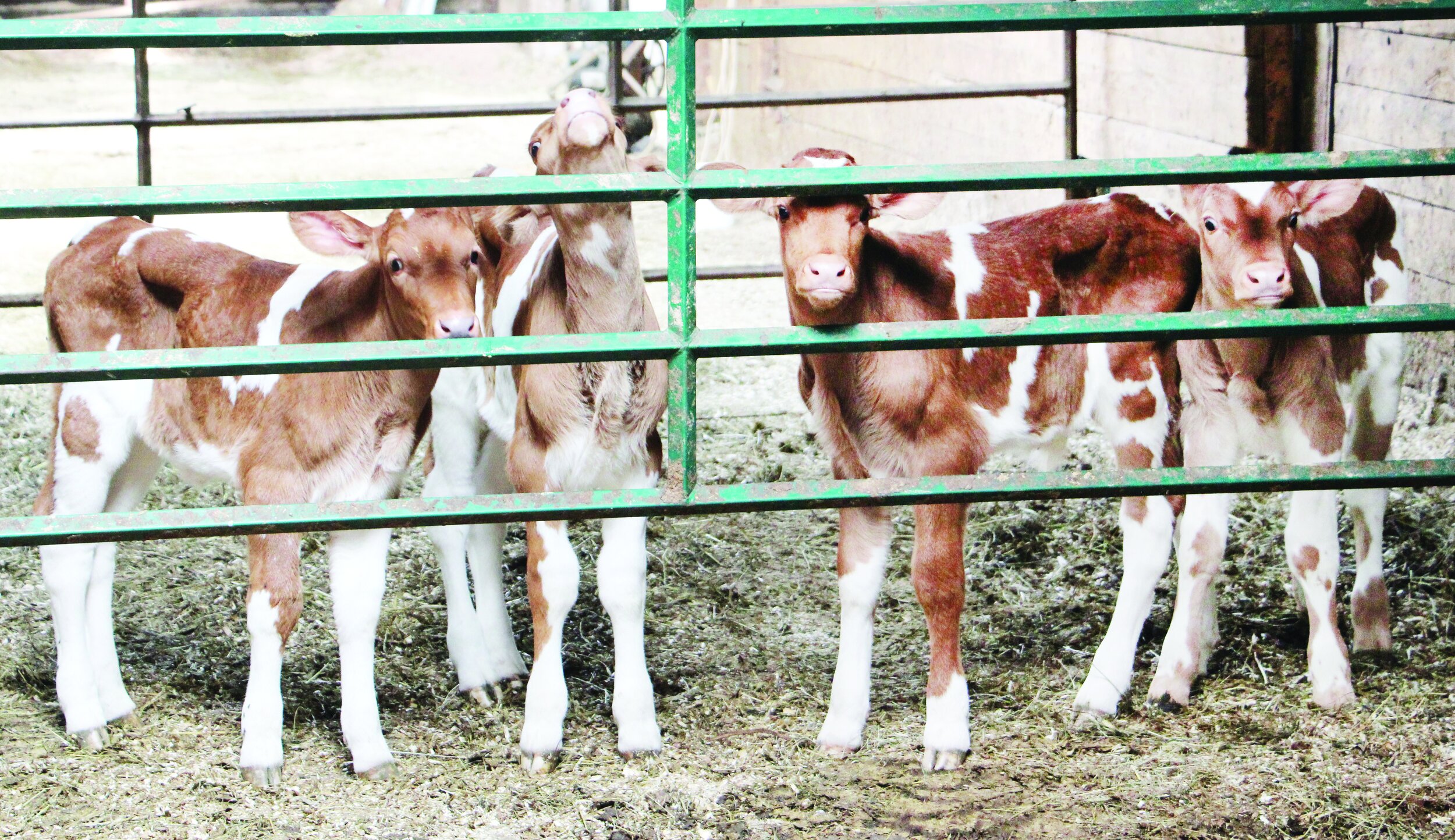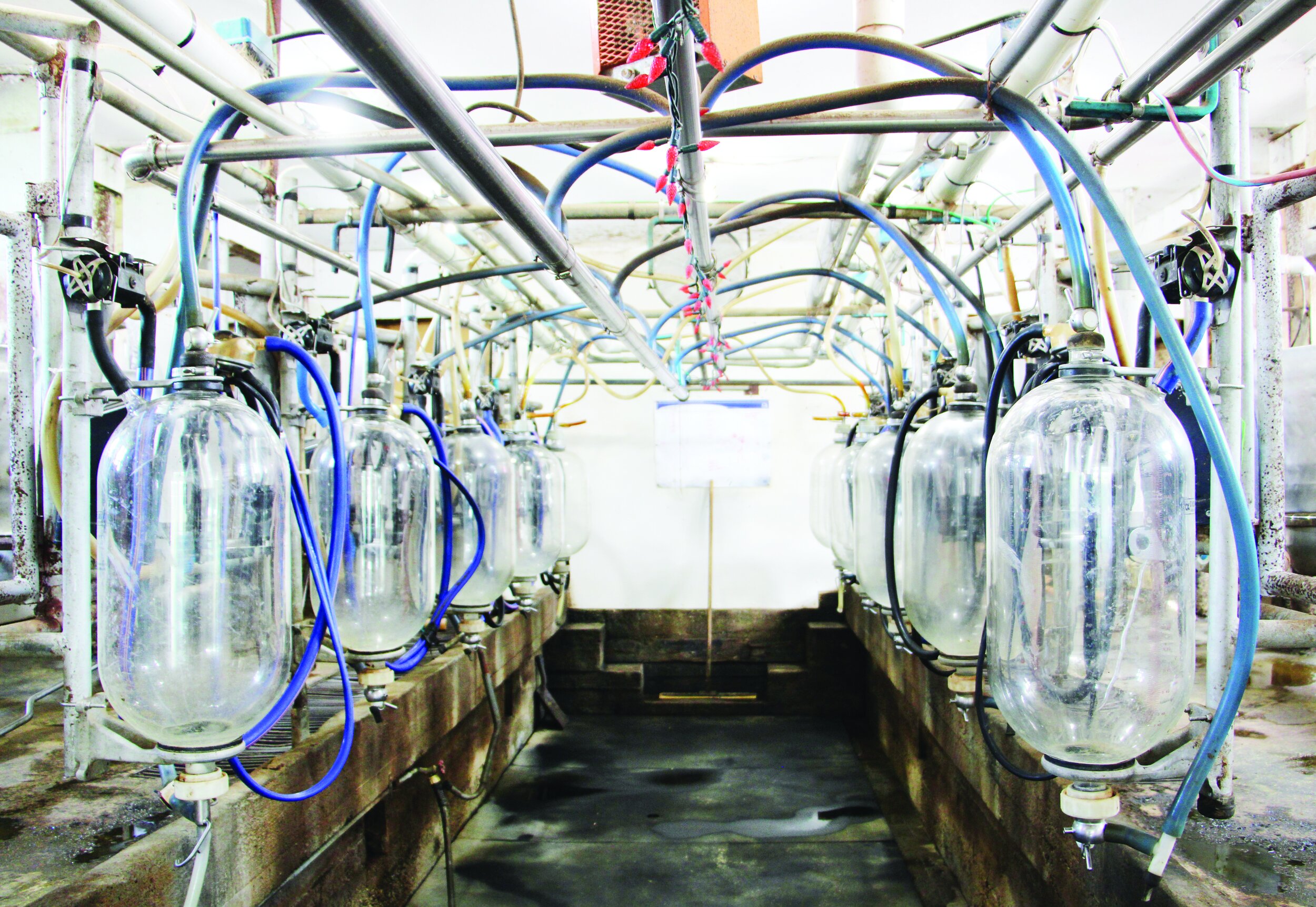New Brunswick farm has Canada’s largest Guernsey herd
/by George Fullerton
Approaching Beaverwood Farm from Route 490, which meanders from Moncton north into the heart of Kent County, visitors are met with a big bright red barn and a two-storey white farmhouse at end of a tree-lined driveway in the middle of large fields.
The farm in Dundas, N.B., is operated by Gary West and his sons Leith and Blake. Beaverwood Farm holds the distinction of having Canada’s largest herd of Guernsey cattle, with 75 cows milking.
The history of the Guernsey breed dates back to the Middle Ages when monks living on the island of Guernsey in the English Channel bred French cattle to produce a breed with a light brown and white patch coat, a docile temperament, and milk with a high butterfat content.
Guernseys were officially imported into Canada in the late 1800s after Nova Scotia farmers recognized the production potential of some Guernsey cattle that were destined for New England but landed on the Nova Scotia shore as the result bad weather.
Gary’s father began building his Guernsey herd in the 1950s on the family’s mixed farming operation at the present location in Dundas.
In his younger years, Gary showed their Guernseys throughout the Maritime provinces and at the Royal Agricultural Winter Fair in Toronto. Over the years, the Wests have invested in high-quality genetics and have built a highly productive herd.
The Wests milked in a stanchion barn until 1972, when they put on an 80-stall free-stall addition, along with a “swing-four” milking parlour.
The milking parlour was expanded to a “double-five” parlour in 2002 when Leith returned to the farm after three years studying farm technology at the former Nova Scotia Agricultural College
In 2006, a free-stall barn was built specifically for the dry cows and heifers.
Leith underlined that he doesn’t like milking a dirty cow and said they purchase dry planer shavings from the Delco sawmill in West Branch, N.B. Indeed, all of the family’s cattle are remarkably clean, as well as displaying a kind and inquiring attitude toward the Wests and farm visitors.
A skid-steer loader is used to scrape the stall alleys twice a day and to deliver shavings for the stalls. Manure is stored in a pit and applied to forage land with a couple of side-slinger spreaders. Soil testing is repeated every three years and additional fertilizer applied in the spring.
MAKING FORAGE
Leith explained that the farm has about 350 acres of land in forage production, primarily grasses and legumes, and that they normally produce around 2,000 individually wrapped round bales of silage as well as round bales of second-cut hay.
However, this year’s drought drastically cut production down to around 1,100 bales.
“We are currently buying hay and silage out of Nova Scotia, Prince Edward Island, and here in New Brunswick to build our inventory,” said Leith in late September. “We are doing it right now while there is availability. Four-by-four bales of silage are costing $80.”
The Wests expect that buying in the required forage will cost them in the range of $35,000.
“In the past, when (family) child labour was abundant, we put up 30,000 to 40,000 small square bales of hay, but eventually moved to round-bale silage with an individual bale wrapper,” said Leith. “It was the economical entry point. We learned how to make high-quality feed with the system, and we have stuck with the system. We advanced to a silage baler with knives, which improved fermentation quality, and the silage also feeds out more efficiently.”
A new 11-foot disc mower-conditioner works alongside an older 10-foot model for speedy forage harvesting.
There are round bales in the farmyard and along the field margins stacked three-bales high. Gary said that they use the skid-steer to handle the bales, adding that three tiers is about the reach and safety working limit of the skid-steer.
“Every second day, we stand ten bales of silage in a crib in the free stall with the skid-steer,” said Leith. “We identify bales by early, mid, and late cuts, and by field.”
Samples are analyzed and the feed concentrate is mixed accordingly. Feed is purchased from the feed mill in Moncton. The concentrate is delivered to the milking cows through automatic feeders.
Beaverwood Farm also relies on 60 acres of pasture for the milking herd and the heifers.
“The milking cows are on pasture every night (seasonally) and most days, but they prefer to be in the barn when it is really hot,” said Leith. “We recognize that being on pasture has positive health and production benefits for our cows.”
RAISING CALVES
Calves are born in maternity pens in the dry cow/heifer barn, and after a short period, the dam goes into the milking free-stall space and the calf goes into the nearby nursery.
Calves are fed colostrum for a number of days and are then switched to milk replacer or milk if excess milk is available. Calves are offered second-cut hay and are introduced to commercial calf grower concentrate.
“We generally move the heifer calves as a group to the heifer barn and switch to silage at about seven months of age,” said Leith. “The male calves are moved to a farm where Blake lives and start out in the barn and go on pasture as they mature. We have a local market for steers as well a market for bulls. We aim for a carcass weight around 400 pounds, which they reach at 14 to 16 months of age.”
They occasionally sell a heifer.
The Wests rely on sires from Canada, Australia, and the U.S., in addition to a cleanup bull.
“Our bull is the son of a heifer which we had sold to (New Brunswick dairy farmer) Sam Freeze years ago,” said Leith. “She was something of a remarkable cow and classified as excellent three times, so we bought back a son and he fits in nicely.”
The Guernsey population is growing in Canada. And Leith pointed to a couple of reasons for the increased interest in the breed.
“First of all, component pricing for milk makes Guernsey and Jersey milk more profitable for dairy operations,” he said, adding that their milk butterfat content is consistently higher than five percent, which makes a big impact on the milk cheque. “Another reason is the high A2 beta-casein protein content of Guernsey milk. Eby Manor farm near London, Ontario, has developed a niche market for the A2 milk. And as the demand for the milk has increased, they have become marketers for two neighbouring farms who have switched to Guernsey herds.”
Proponents of A2 milk claim that it has specific health benefits, better digestibility, and mitigates certain allergy symptoms. About 96 percent of Guernsey milk contains the A2 protein, according to the World Guernsey Cattle Federation.
